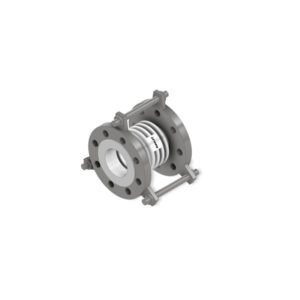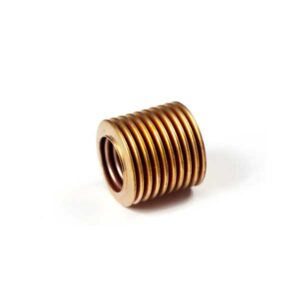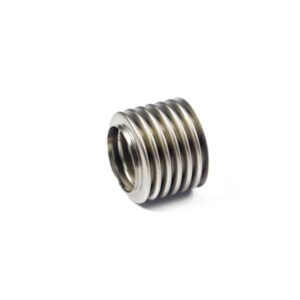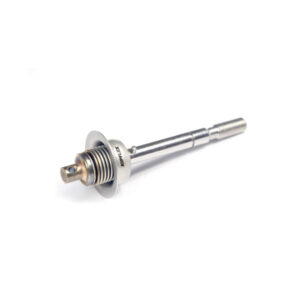Stainless Steel Bellows

Stainless Steel Bellows
There are many kinds of materials for making bellows. Stainless steel bellows specifically refers to bellows made of stainless steel.
- Material: 304, 321, 316L Stainless Steel
- Size: From DN15 to DN300
- Typical lea time: 15 days
- MOQ: 1 PC
*Custom bellows are available on request.
From $*
There are many kinds of materials for making bellows. Stainless steel bellows specifically refers to bellows made of stainless steel.
It is a material classification of metal bellows and sometimes refers to bellows for a certain application, such as automobile exhaust performance.
Stainless steel bellows can compensate for pipeline displacement, absorb equipment vibration, and provide flexible connections.
It is an essential connecting part for many pipeline systems.
Among various types of bellows valves, stainless steel bellows provide a flexible hard seal for the valve, greatly reducing the possibility of valve leakage.
In the vacuum pump system, the stainless steel bellows plays the role of a flexible connection, improving the flexibility of the vacuum system for assembly.
Stainless steel bellows is a corrugated pipe with regular shape.
The use of ultra-thin stainless steel, combined with the unique wavy shape structure, gives it surprising softness.
For the convenience of connection, people will assemble various connection fittings at both ends of the bellows, such as welded ends, flanges, threads, etc.
Stainless steel has good ductility and strong plasticity, and is particularly suitable for the production of products with complex surface shapes such as bellows.
Stainless steel bellows can be divided into stainless steel 304 bellows, stainless steel 321 bellows, stainless steel 316L bellows, stainless steel 316Ti bellows, etc. according to different material grades.
Among them, stainless steel 304 bellows is the most widely used due to its good balance.
Stainless steel 321 bellows can withstand higher operating temperatures than stainless steel 304 bellows.
Stainless steel 316L bellows is more suitable for corrosive working environments.
Applications
Stainless steel bellows are favored in more and more industries due to their unique flexibility.
According to different applications, stainless steel bellows can be divided into stainless steel exhaust bellows, stainless steel coupling bellows, stainless steel valve bellows, stainless steel vacuum bellows, etc.
- Stainless steel exhaust bellows
- Stainless steel coupling bellows
- Stainless steel valve bellows
- Stainless steel vacuum bellows
Advantages of Stainless Steel Bellows
Stainless steel bellows have good pressure-bearing capabilities and provide more flexibility for pipelines while meeting connection needs.
Stainless steel bellows can compensate for the displacement caused by thermal expansion and contraction of the pipeline, or the position deviation during the pipeline installation process.
Stainless steel bellows can also isolate vibrations caused by equipment operation to prevent damage to surrounding pipes or connections.
In addition, stainless steel bellows have good heat resistance and can still maintain their excellent physical and mechanical properties under high-temperature conditions.
The stainless steel bellows has a shiny appearance and is permanently bright as new.
The stainless steel bellows is made of thin-walled stainless steel material, which reduces the overall weight, greatly reducing the load and construction time of the construction operation.
- Good pressure-bearing capabilities
- Compensate for displacement
- Isolate vibrations
- good heat resistance
- Shiny appearance
- Light weight
Types of Stainless Steel Bellows
Stainless steel bellows can be divided into stainless steel 304 bellows, stainless steel 321 bellows, stainless steel 316L bellows, stainless steel 316Ti bellows, etc. according to the materials used.
For the needs of performance design and the flexible use of stainless steel materials, bellows manufacturers will produce bellows with different layers.
The bellows using a single ply of stainless steel material is called a single ply stainless steel bellows, and the bellows using a 2 ply stainless steel material is called a 2 ply stainless steel bellows.
Or bellows other than single ply bellows may be collectively referred to as multi ply bellows.
According to different forming methods, stainless steel bellows can also be divided into hydroformed bellows, mechanical expansion bellows, edge welded bellows, roll forming bellows, and electrodeposition bellows.
According to different convolution structures, stainless steel bellows are divided into U-shape bellows, V-shape bellows, S-shape bellows, and Omega-shape bellows.
Manufacturing Process
The production of stainless steel bellows can be simply summarized into 4 steps. Below we have prepared the corresponding processing diagram for your understanding.
- Cutting
- Rolling
- Welding
- Forming
Quality Standards and Testing
When stainless steel bellows is used as the core part of a bellows expansion joint or bellows compensator, its main inspections are appearance inspection, dimensional inspection, and seam weld quality inspection.
When stainless steel bellows are used independently, the bellows manufacturer also performs air tightness testing on it.
- Appearance inspection
- Dimensional inspection
- Seam weld quality inspection
- Air tightness testing






